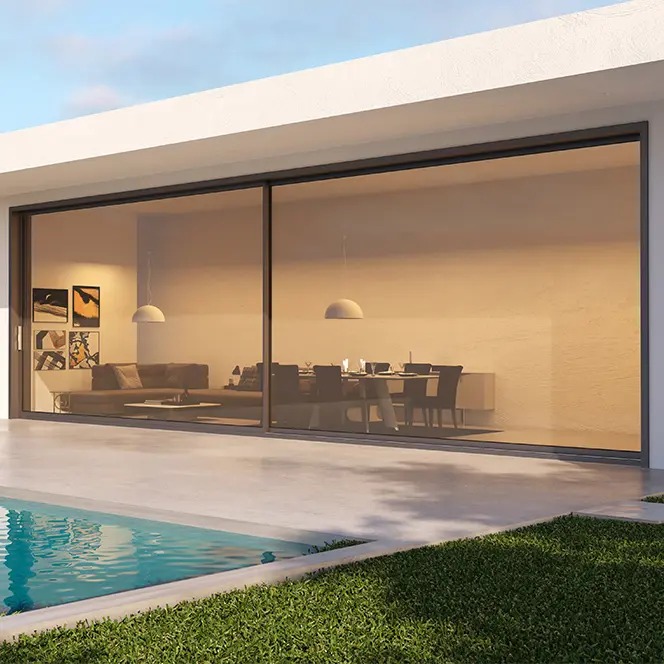- English
- Español
- Português
- русский
- Français
- 日本語
- Deutsch
- tiếng Việt
- Italiano
- Nederlands
- ภาษาไทย
- Polski
- 한국어
- Svenska
- magyar
- Malay
- বাংলা ভাষার
- Dansk
- Suomi
- हिन्दी
- Pilipino
- Türkçe
- Gaeilge
- العربية
- Indonesia
- Norsk
- تمل
- český
- ελληνικά
- український
- Javanese
- فارسی
- தமிழ்
- తెలుగు
- नेपाली
- Burmese
- български
- ລາວ
- Latine
- Қазақша
- Euskal
- Azərbaycan
- Slovenský jazyk
- Македонски
- Lietuvos
- Eesti Keel
- Română
- Slovenski
- मराठी
- Srpski језик
Aluminum Profiles in Modern Engineering: Applications and Innovations
2025-05-22
Aluminum profiles have revolutionized modern construction and industrial design due to their lightweight nature, corrosion resistance, and structural adaptability. This article explores four critical categories: Doors And Windows Aluminum Profile, Curtain Walls Aluminum Profile, Industrial Aluminum Profile, and Standard Common Aluminum Profile, highlighting their technical specifications, applications, and industry standards.
1. Doors And Windows aluminum profile: Precision in Building Envelopes
Doors And Windows Aluminum Profile forms the backbone of energy-efficient building enclosures. Modern systems like the Alitherm 600 and Alitherm Plus exemplify advanced thermal performance, achieving a U-value of 1.3W/m²K with triple-glazed units and polyamide thermal breaks to minimize heat transfer. Key specifications include:
Structural Integrity: Frame depths of 59mm–70mm, supporting side-hung windows up to 1,400mm in height and 1,000mm in width.
Certifications: Compliance with BS 6375-1:2009 (weathertightness) and PAS 24:2012 (security), with air permeability (Class 4, 600Pa) and water resistance (Class E, 1,200Pa) ratings.
Aesthetic Flexibility: Dual-color anodized or powder-coated finishes, enabling seamless integration with architectural styles.
2. Curtain Walls Aluminum Profile: Engineering Skyscrapers’ Skins
Curtain Walls Aluminum Profile enables the creation of lightweight, high-strength façades for modern high-rises. The Smart Wall System exemplifies this category, featuring narrow frames (24mm–32mm glazing) and polyamide thermal breaks for U-values as low as 1.4W/m²K
. Critical design parameters include:
Thickness Standards: Typically 1.5mm–3mm, with thicker profiles (2.5mm–3mm) recommended for tall buildings to withstand wind loads exceeding 2,400Pa.
Load-Bearing Capacity: Curtain wall mullions often use 6063-T6 alloy, achieving elastic moduli of 70,000MPa to limit deflection under wind pressure
Fire Safety: Integration of fire-rated glass and intumescent seals to meet EN 13501-2 standards.
3. Industrial Aluminum Profile: The Backbone of Machinery
Industrial Aluminum Profile dominates automation and machinery due to its modularity and load-bearing capacity. Extruded from 6061-T6 or 6082 alloys, these profiles feature:
Structural Versatility: T-slot designs for rapid assembly, supporting dynamic loads up to 1,500kg/m in conveyor systems.
Surface Treatments: Hard anodizing (20–25μm) or chromate conversion coatings for wear resistance in harsh environments.
Standardization: Compliance with DIN 91285 (European modular profiles) and GB/T 6892 (Chinese industrial standards).

4. Standard Common Aluminum Profile: Universal Solutions
Standard Common Aluminum Profile refers to extruded shapes (angles, channels, I-beams) used across industries. Key characteristics include:
Alloy Selection: 6063-T5 for general-purpose applications (e.g., furniture frames) and 6005A-T6 for structural components.
Tolerance Control: Adherence to EN 755-9 dimensional standards (±0.3mm for thickness <10mm).
Cost Efficiency: Mass-produced via direct extrusion, reducing material waste by 15%–20% compared to custom profiles.
Trends and Sustainability
The aluminum profile industry is shifting toward circular economy principles, with 75% post-consumer recycled content in European fenestration systems. Innovations like graphene-enhanced coatings (improving hardness by 40%) and AI-driven extrusion defect detection are redefining quality benchmarks.
By integrating Doors And Windows Aluminum Profile, Curtain Walls Aluminum Profile, Industrial Aluminum Profile, and Standard Common Aluminum Profile, engineers achieve optimal balance between performance, aesthetics, and sustainability—a testament to aluminum’s enduring role in modern engineering.
If you are interested in our products or have any questions, please feel free to contact us and we will reply you within 24 hours.


